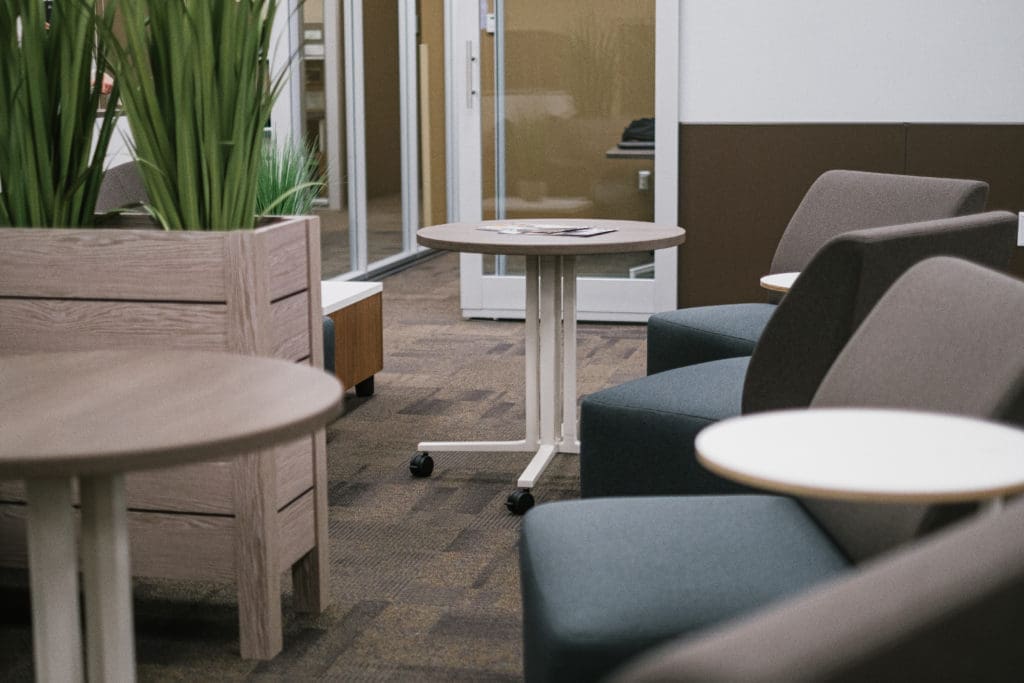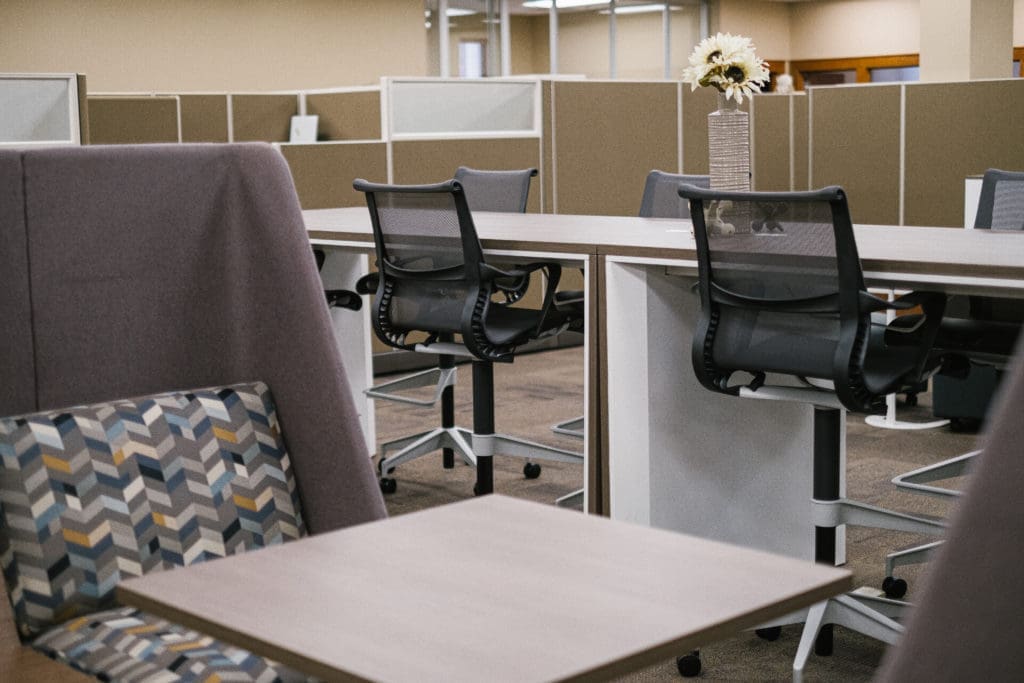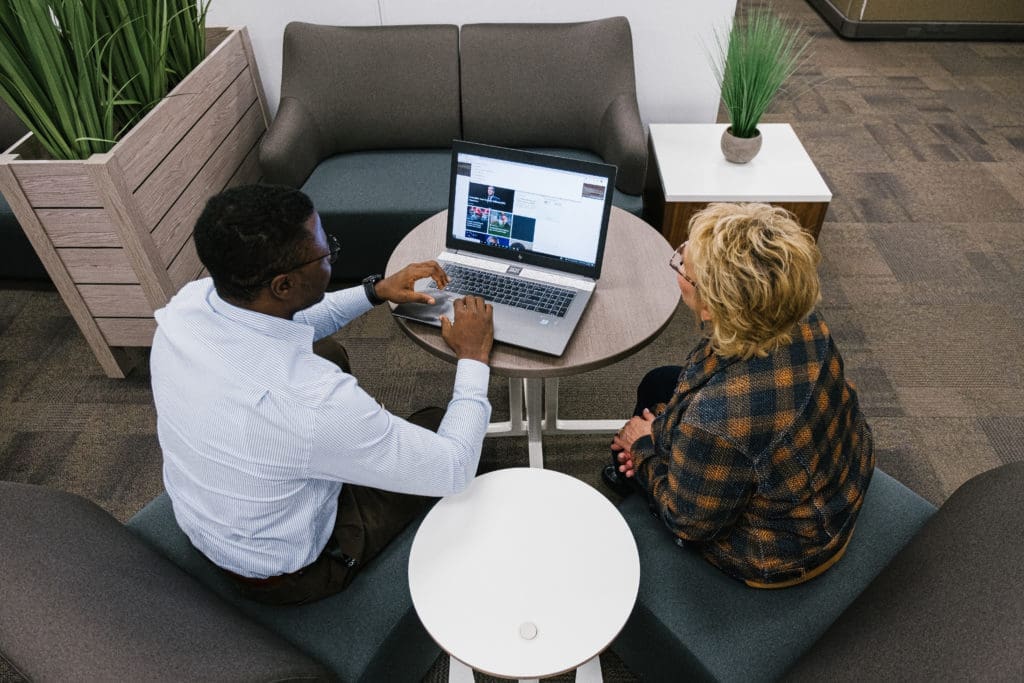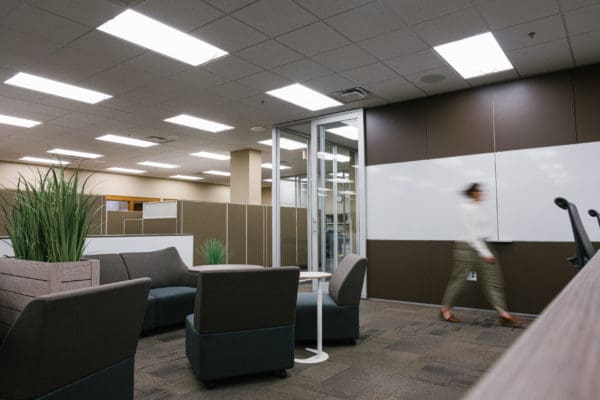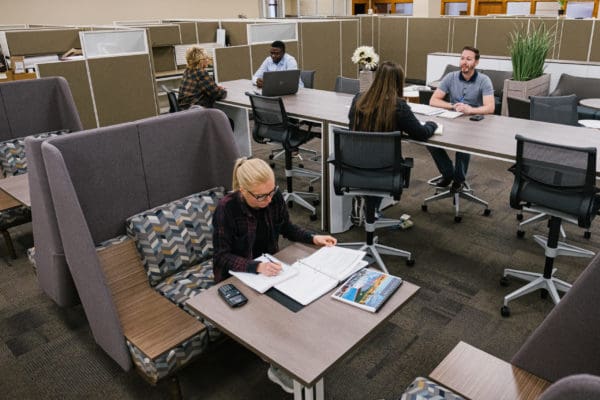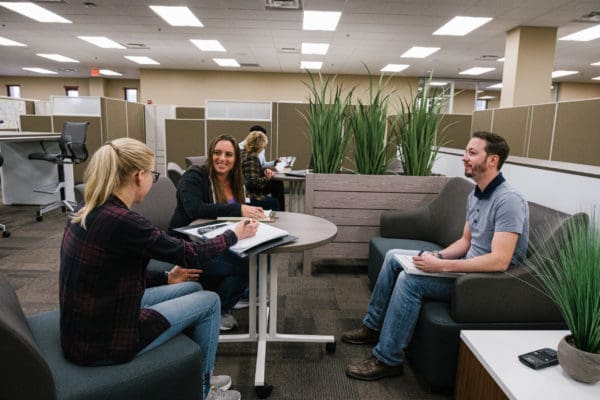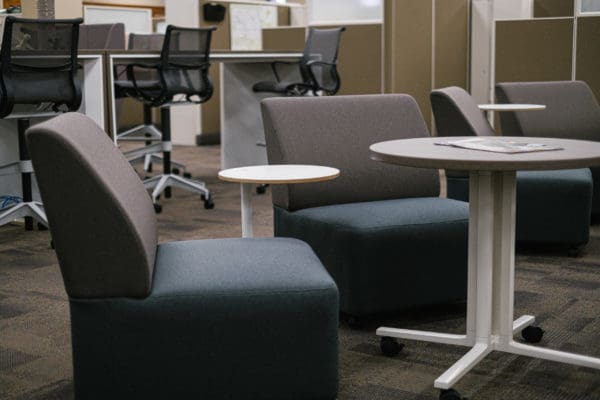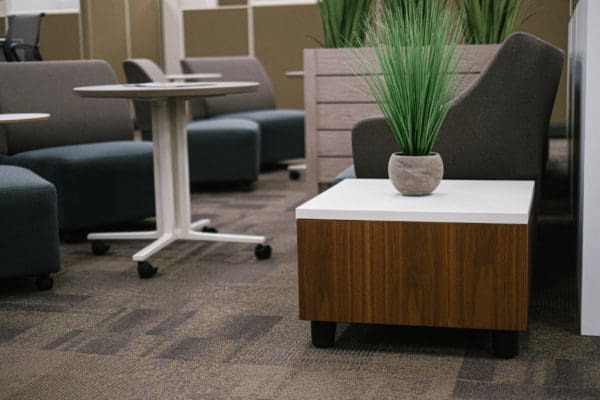Offices across the country have reopened in recent months, but many Americans have chosen to continue working from home permanently. Others have transitioned into a hybrid model, working from home for a few days a week and in-office for the others.
“Offices are always evolving because of change—changes in technology, communication, privacy, collaboration,” said Kyle Hellman, Workspace Expert at InterOffice. “Since the onset of the COVID-19 pandemic, this new way of working has required many offices to consolidate, and rethink how they are using floor space.”
Prior to the pandemic, privacy had been the top priority for agencies like the North Dakota Department of Transportation. In 2014, the NDDOT decided to assign each employee their own workstation or private office, which resulted in the agency’s central Bismarck office becoming a “cube farm” consisting of about 350 individual workstations arranged in neat rows.
Fast forward seven years: many of those cubicles sat empty, their occupants opting to continue working from home even as other employees transitioned back into the office. Plus, there were few spaces for remote or hybrid workers to utilize when they did come into the office. Under the leadership of Programming Engineer Jane Berger and Strategy and Innovation Director Russ Buchholz, NDDOT collaborated with InterOffice to transform the space into a modern, inviting environment that would work for every kind of worker.
“We relied heavily on InterOffice’s design skills,” Berger said. “We might design roads, but we don’t design furniture.”
First, the NDDOT team communicated with employees to determine what their work would look like moving forward. Once Berger and Buchholz had an idea of how many employees would be working remotely, in-office, or both, they shared those numbers with Hellman, who devised a plan.

